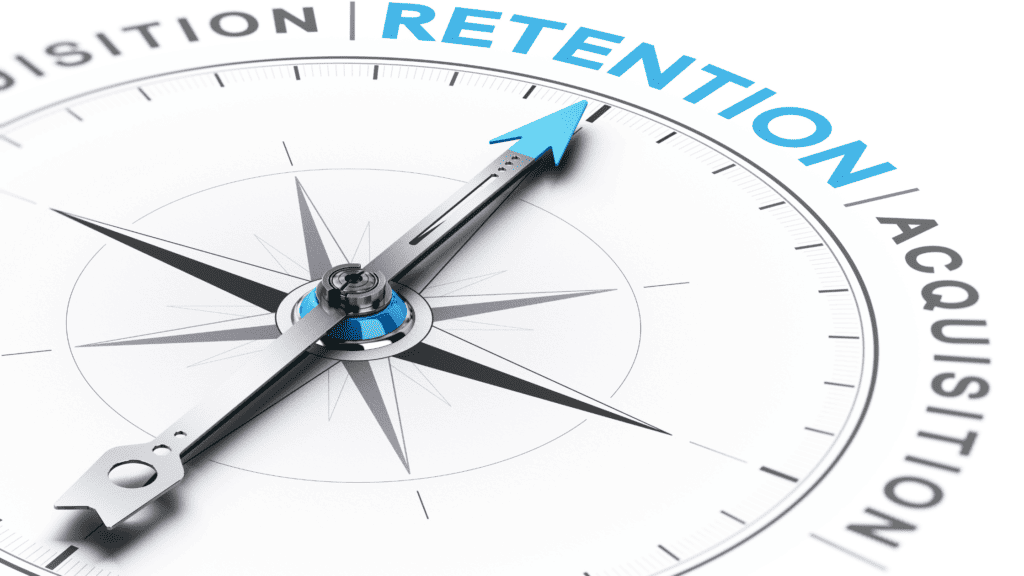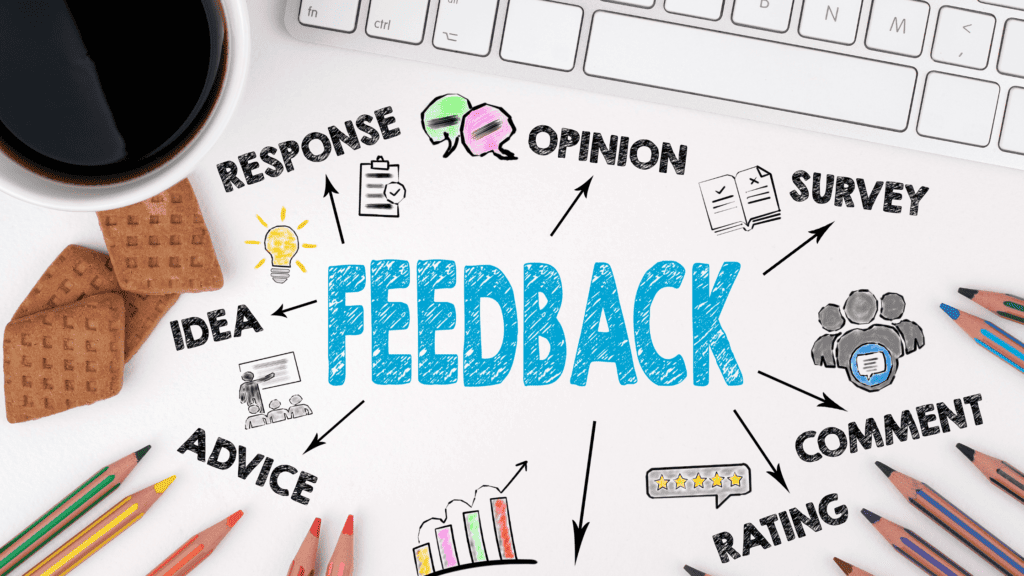Let’s dive into what is a good return customer rate. The success of this is that you provide excellent customer service by ensuring that your service team is responsive, knowledgeable, and empathetic. Personalize customer interactions to foster a stronger emotional connection with your brand, and implement loyalty programs to reward customers for their continued business, such as discounts, exclusive access, or other incentives to encourage repeat purchases.

We will dive into how you can amplify your return purchase rates by smartly using feedback and rewards initiatives. Plus, we’ll tackle why keeping existing customers happy costs less than finding new ones and how this impacts profitability. Lastly, prepare for actionable insights on using technology to keep tabs on important metrics that help retain customers over time.
Understanding the Fundamentals of What is A Good Return Customer Rate
A strong returning customer rate is like having a superpower in the business world. It means you’ve got a loyal squad who doesn’t just visit once but returns for more. But what exactly does this term mean, and why should you care? It gauges the number of patrons who adore your offering to the extent that they decide to buy again.
What is the Returning Customer Rate, and How to Calculate It

To get down to brass tacks, calculating your returning customer rate is something other than rocket science. You divide the number of customers who have shopped more than once by your total number of customers within a specific period. Multiply that number by a hundred, and there you have it. You’ve got your percentage.
Should crunching numbers or deciphering metrics feel overwhelming, DashThis steps in with a comprehensive manual to master this equation effortlessly.
This metric highlights whether people are digging what you’re selling enough to return for seconds (or thirds). A higher rate indicates happy campers; a lower suggests it might be time for tweaks.
The Importance of Customer Loyalty in Business Growth

Talking about growth without mentioning customer loyalty is like trying to run before you can walk—it just doesn’t work out well. Repeat purchases from existing customers keep the cash flowing and build resilience against market fluctuations. This solid base forms because earning trust takes less effort with someone who already knows they love what you do.
Key Benchmarks for a Good Return Purchase Rate
A healthy return purchase rate signals that your business isn’t just attracting new customers but keeping them engaged enough to return. So, what’s the magic number? Industry standards suggest that a repeat purchase rate equal to or above 27% indicates effective customer retention strategies.
Digging into why this figure matters can be eye-opening; for e-commerce businesses striving for growth, understanding and implementing robust customer retention strategies are essential. It’s not merely about enhancing figures; it’s crafting bonds that go beyond transactions. Imagine having a base of loyal customers who choose you over competitors time and again because they trust your brand.
This level of loyalty doesn’t happen by accident. This loyalty is sculpted with meticulous precision, unparalleled customer support, and a steadfast dedication to offering worth that extends well past the initial transaction. Are you curious about how you can start improving these metrics within your own Shopify store? A deep dive into Squarespace’s insights on return customer rates could provide inspiration and actionable tips.
Strategies to Boost Your Return Customer Rate
Prioritizing Customer Feedback for Enhanced Engagement

Gone are the days when businesses could afford to ignore what their customers think. Nowadays, in the era of constant online connectivity, making customer satisfaction a top priority isn’t merely an option—it’s a critical lifeline for any business aiming to thrive. Harnessing the power of digital platforms like social media and email can create a two-way street for dialogue, making it easier for your clientele to voice their thoughts and experiences.
Listening to their voices gives us the insights necessary to customize our services more precisely, enhancing satisfaction and loyalty among those we serve.
For instance, DashThis explains how critical returning customer rate is, and calculating it can offer insights into areas needing improvement.
Remember, every piece of feedback is gold dust that can help refine your retention strategy further.
Launching Reward Points Campaigns
Loyalty programs have long been heralded as a surefire way to boost repeat purchases – and with good reason. Launching reward points campaigns taps into the basic human instinct of loving rewards for actions taken. Yet, the plot thickens when these schemes evolve by merging effortlessly with tech platforms such as Shopify or various online marketplaces.
The result? A loyalty program that feels more like an engaging game than a sales tactic will keep existing customers returning and attract new ones curious about the buzz surrounding your innovative approach toward rewarding loyalty. Plus, considering keeping an existing customer costs significantly less than acquiring a new one makes this strategy all the more appealing financially, too.
The Cost-Effectiveness of Retaining Existing Customers

Did you know keeping an existing customer costs five times less than snagging a new one? It’s far from trivial; indeed, it revolutionizes how we view our financial success. When discussing the cost-effectiveness of focusing on existing customers, we dive into some serious savings and potential growth.
Concentrating on those who’ve bought from us means lower acquisition costs and beefing up that bottom line. It’s like nurturing a garden you’ve already planted versus constantly breaking ground on new plots. This strategy doesn’t just save money; it builds upon the trust and familiarity established with your customer base.
Dive deeper into the methodology where funneling resources into existing clientele amplifies financial gains. You’ll find compelling reasons why making them feel valued can lead to more sales without the hefty price tag of seeing someone new.
Remember, when you treat your customers like VIPs, they’re not only likely to stick around—they become champions of your brand.
Measuring Success Through Key Metrics
Focusing on the right metrics is like having a compass in the vast sea of e-commerce. It’s what guides you to your treasure: growth and profitability. Discussing retention figures, the frequency of customer loss, and the expenses involved in gaining new patrons isn’t merely engaging in trendy jargon; it’s equipping oneself with crucial navigational instruments to steer your venture toward triumph.
Retention Metrics: The Lifeline of Customer Loyalty
The journey doesn’t end when a customer makes a purchase; it only begins. Keeping track of how many come back is crucial because repeat customers mean steady revenue without the hefty price tag of acquiring new ones. To further amplify your business’s expansion, delving into the nuances of customer retention metrics could unveil pivotal strategies.
A soaring retention rate is a clear indicator that your offerings strike a chord with your clientele, thereby trimming down on promotional expenses while elevating the average spend per order as time goes by.
Churn Rate: Understanding Customer Turnover
An unavoidable part of any subscription-based service or regular purchasing model is customer turnover—also known as churn rate. This metric helps businesses identify potential issues early by highlighting patterns in lost customers, which can be addressed proactively to prevent further loss.
Acquisition Cost: Balancing Investment and Return
Gaining new customers is exciting but costly. You ensure sustainability rather than short-term gains by measuring how much you spend on each new shopper through advertising or promotions against their lifetime value (LTV). Strategies for optimizing this balance can significantly impact profitability, as discussed in-depth in Invesp’s analysis of acquisition vs retention costs.
Leveraging Technology for Improved Customer Retention
Modern technology offers a treasure trove of tools and platforms to enhance customer retention. Harnessing key data points enables companies to devise tactics to transform newcomers into steadfast supporters.
Converted.In Tool for Tracking Metrics
In the digital marketplace, grasping who your buyers are is essential for nurturing a bond that transforms casual shoppers into devoted followers. Tools like Converted.In shine by offering in-depth insights into customer behavior. Leveraging this tech, you can track a spectrum from buying habits to interaction trends—a treasure trove for crafting encounters that magnetize repeat business.
Far from merely gathering stats, these innovations are crucial in pinpointing opportunities to enhance your products or customer care. For instance, noticing a high cart abandonment rate at checkout might indicate issues with your payment process or unexpected costs being added late in the buying journey.
These instruments do more than just observe; they weave a connection, transitioning from mere transactions to crafting shopping journeys that resonate deeply with each individual’s desires and requirements. Implementing personalized recommendations based on previous purchases or browsing habits makes shoppers feel understood and valued—a critical component in building long-term relationships.
Incorporating technology isn’t just about gathering numbers; it’s about leveraging those numbers to make informed decisions that directly impact your ability to retain customers effectively. As we progress, embracing these technological advancements becomes advantageous and essential for any e-commerce business looking toward sustainable growth through enhanced customer loyalty.
Enhancing E-commerce Growth Through Returning Customers

Focusing on returning customers can significantly drive e-commerce business growth. Fostering a sequence of recurrent buying, rather than merely closing a deal, fortifies your financial foundation.
A reasonable return customer rate highlights how well you keep shoppers returning for more. Imagine having customers who don’t just buy once but become loyal advocates of your brand, contributing to a steady stream of revenue without the hefty price tag attached to new customer acquisition.
Prioritizing Customer Feedback for Enhanced Engagement
One secret sauce for higher returning customer rates is prioritizing customer satisfaction. By listening to the actual desires and necessities voiced by users, this strategy addresses problems. It transforms them into chances for improving both the products available and the entirety of the shopping journey.
Listening closely to this treasure trove of feedback enables companies to fine-tune their game plans, guaranteeing they consistently resonate with loyal and prospective patrons. Shopify highlights how leveraging such direct lines of communication fosters deeper connections that encourage folks to return.
Launching Reward Points Campaigns
Reward points campaigns are like saying “thank you” with each purchase, incentivizing further engagement from your buyers. Loyalty schemes elevate mere transactions into opportunities, turning casual purchasers into eager enthusiasts keen on accumulating more rewards with each buy.
This strategy aligns perfectly with nurturing an environment where value is constantly given and received, cementing a solid foundation for sustained business growth through loyal patronage.
Creating Delightful Experiences for Repeat Purchases
Every e-commerce business dreams of customers returning wallets ready to make another purchase. By centering our efforts on crafting experiences that meet and exceed expectations, we can transform this aspiration into actuality, ensuring shoppers return eager for more.
Boosting Brand Reputation Through Exceptional Service
To turn one-time buyers into loyal fans, exceptional customer service is vital. Crafting an unforgettable journey with your brand hinges on every touchpoint resonating positively. Think about it: when did you last rave about a product or service? Chances are, it involved more than just the product—how you were treated as a customer.
A stellar reputation encourages loyalty and repeat purchases because people trust brands that treat them well. But don’t take my word for it—according to Entrepreneur, businesses providing superior customer experience generate 5.7 times more revenue than competitors who lag in this area.
Loyalty programs also play a crucial role here; they’re not just reward systems but signals that you value ongoing relationships over one-off transactions. Fostering loyalty through rewards cements a bond with your clientele and provides irresistible incentives for their continued patronage.
In summary (but without saying “in summary”), delighting customers leads to higher rates of repeat purchases. In this win-win situation, your clients feel valued, and your bottom line sees growth too.
The Role of Social Media in Engaging Returning Customers

Social media platforms have revolutionized how brands interact with their communities, especially when engaging returning customers. With a focus on fostering a sense of belonging and loyalty, these digital spaces offer unique opportunities for brands to connect with their audience personally.
Harnessing the power of content created by users, which vividly captures their encounters with goods or services, emerges as a potent tactic. By amplifying genuine brand stories, this approach bolsters the perception of authenticity and motivates additional patrons to narrate their encounters, fostering a perpetual loop of interaction and recurrent patronage. Sites like Instagram and Facebook become pivotal arenas for promoting and nurturing bonds with patrons, acting as robust instruments for cultivating customer connections.
Additionally, social media platforms enable an immediate dialogue between companies and their clientele via commenting, direct messaging, and critique sharing. By responding promptly and thoughtfully to customer responses—whether positive or negative—brands can demonstrate exceptional customer service that resonates well within the online community. This level of attentiveness contributes significantly towards establishing trustworthiness among existing customers while attracting potential new ones intrigued by the company’s proactive approach.
In essence, mastering social media to keep customers coming back is all about crafting real bonds via engaging posts, embracing their input transparently, and nurturing a lively community about what your brand stands for. Learn how to leverage the dynamic force of social media to boost your online store’s expansion tactics.
Wrapping Up My Experience with What is A Good Return Customer Rate
So, we’ve journeyed through understanding what a good return customer rate is. Key takeaways? A robust return customer rate is akin to holding the key that unlocks the potential for expansion and enduring prosperity.
Begin by comparing your existing rates to the standard markers set within your industry. Make sure you’re leveraging customer feedback and rewards to boost loyalty.
Prioritize loyal customers; it’s more cost-effective than chasing new ones. And remember the power of technology in tracking critical metrics for retention.
Create experiences that turn first-time buyers into repeat customers. Remember, a delighted customer is a returning one.
If you aim for sustainable business growth, enhancing your return customer rate should be at the top of your list. At the heart of it, these aren’t mere statistics; they embody individuals who have repeatedly trusted your brand.
Frequently Asked Questions
A good customer retention rate typically ranges from 60% to 80%. However, the ideal rate can vary depending on the industry, business model, and customer acquisition cost.
Customer retention rate is calculated using the formula: [(Number of Customers at the End of a Period – New Customers Acquired During that Period) / Number of Customers at the Start of the Period] x 100%.
Customer retention is crucial because it contributes to long-term profitability, reduces customer acquisition costs, fosters brand loyalty, and generates positive word-of-mouth referrals.
- Provide exceptional customer service.
- Personalize customer experiences and communications.
- Implement loyalty programs and incentives for repeat business.
- Collect and act on customer satisfaction.
- Maintain consistent communication with customers.
- Enhance overall customer experience.
- Deliver high-quality products or services.
- Build strong relationships with customers beyond transactions.
- Analyze and address customer churn patterns.
- Set and track key performance indicators related to customer retention.
Improving customer retention is an ongoing process, and the timeline for seeing improvements can vary based on factors such as the effectiveness of implemented strategies, industry dynamics, and customer behavior.
Customer experience plays a significant role in customer retention, as positive experiences contribute to customer satisfaction, loyalty, and advocacy. Consistently delivering excellent customer experiences across all touchpoints is crucial for retaining customers.
Businesses can measure the success of their customer retention efforts by tracking key performance indicators (KPIs) such as customer retention rate, customer satisfaction scores, Net Promoter Score (NPS), repeat customer rate, and customer lifetime value (CLV).



